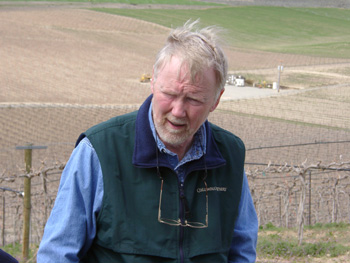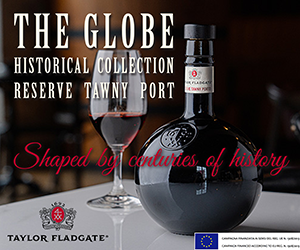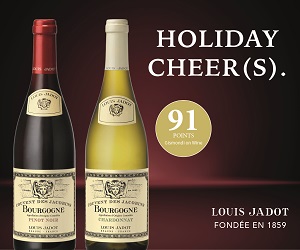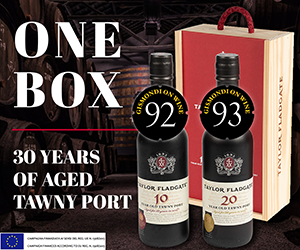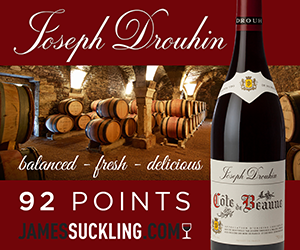After the warmest summer of my 25 vintages with Columbia Winery, there was every reason to expect an early start and swift conclusion to the harvest.
The first grapes were picked on September 6th, about a week earlier than usual, and two surprising incursions of cloudy, cool weather in mid-September and then again in early October interrupted the rapid ripening cycle and extended the harvesting until late October. This double-dip in temperatures allowed flavor and physiological ripeness to catch up with sugar accumulation, by providing valuable hang-time in the vineyard. The wines have admirable fruit and charm with good depth of color and flavor in the reds, tannin and acid levels are moderate and wines seem likely to show very well early.
THE VINEYARD YEAR
Winter was ominously dry in the Cascade Mountains but free from the deep cold that can damage vines and reduce crops. Then in early spring, heavy, late snowfall in the mountains built up a welcome snow-pack to supply our irrigation reservoirs. March was atypically wet in the vineyards also. We saw a slightly delayed bud-break in mid-April, and sunny weather advanced the vines surely but slowly towards flowering in mid June. Grape set was even, and clusters were numerous. Leaf-canopies were extensive because of spring rainfall, despite being thinned or hedged by most growers after bloom. The dappled shade of these canopies was invaluable in July and August, which were exceptionally hot. Providentially, these mid-summer temperatures were often too warm for accelerated ripening and we avoided harvesting in the August heat. Generally the berries were kept small by the dry, warm conditions, which concentrated color and flavor.
Red Willow vineyard had a heat summation during the growing season of 3,102 degree days, versus 2,600 in an average year. This exceeds, by 90 degree days, the previous record 1998 vintage. Washington's milder winters and hotter summers in recent years reflect a definite trend, which makes me a firm believer in the global-warming concept. Wise winemakers are well advised to heed this trend and its impact on winegrowing and winemaking.
THE VINTAGE
Columbia's 2003 harvest began on September 6th, with pickers gathering on the steep slopes of the Monsignor Chapel Hill at Red Willow to bring in Merlot. All varieties had been severely cluster-thinned as usual by grower Mike Sauer to concentrate their character and quality. Contracts stipulate payment by the acre and not, as is common, by the ton. This enables us to focus our entire attention on growing the best fruit imaginable.
This start was six days ahead of our average opening of September 12th, but it was only the sixth earliest of my 25 vintages in Washington. Had the warm weather continued, we might have anticipated an overwhelming avalanche of grapes, but on September 10th a nine-day respite of cool but dry weather intervened.
This was succeeded by two weeks of warm sunshine and then another cool, cloudy week in early October, which gave way to a final two weeks of great, warm ripening weather. We experienced a normal progression of varieties and slopes, and were able to pick each site as it attained optimum ripeness.
Columbia Winery relies mainly on hand-harvesting so that a slowly maturing vintage is doubly welcome. The fruit was uniformly healthy without any disease. It was possible to harvest entirely on flavor development and balance.
Our final picking, of the 46 year old Cabernet Sauvignon vines at the Otis Vineyard, came in on October 24th. It promises to be an outstanding wine! A full four weeks separated this harvest from the picking of the Cabernet Sauvignon at Red Willow. Both had modest yields, 2.5 to 3.5 tons per acre, and both ripened fully. This illustrates the diversity of micro-climates in the Yakima Valley, in their response to an unusually warm growing-season. The overall duration of our crush was seven weeks, an extended scenario, and not the short, hot vintage we had feared.
For this winemaker a prolonged harvest is a mixed blessing, involving as it does even more crossings of the Cascade Mountains to the vineyards and the Sunnyside winery, which will amount to 26 roundtrips totaling over 12,000 miles on the road this crush, plus many marathons walking in the vineyards sampling grapes! At this time of year, the immediacy of cell-phone communications is an unmitigated blessing!
IN THE WINERY
At the Woodinville winery we had the most experienced and best-prepared cellar-crew ever under the capable guidance of our Assistant Winemaker, Erik Hoins, and our Enologist, Robert Takahashi. Both have been with us a dozen years now and this year we had the welcome assistance of our bottling-line team. The extended harvest posed no problems and the crush was perhaps the most comfortably paced we have experienced.
A second installment of the new sloped-bottom fermenters improved our red-wine processing. The emphasis was on gentle handling of reds to accentuate fruit and avoid harsh tannins.
A feature of this year was the low level of malic acid in our grapes, and the early completion of malo-lactic fermentation. Initial Total Acids were relatively low, but we lost so little in fermentation that the eventual acid balances in the wines are excellent.
QUALITY ASSESSMENT
At this early point, on November 12th, it is clear that we have made wines with considerable early charm and fruit. Extended hang-time has given us whites with decent fruit intensity and balanced acidity. Reds have good color development resulting from smaller than normal crop levels, cool nights and the extended harvest. Only a very few Merlot blocks that came in ahead of the initial cooling-off period in early September failed to benefit from this scenario and these account for less than 10% of our harvest. The Cabernets and Syrahs seem particularly strong in this vintage. They have fine varietal character and moderate levels of ripe tannins.
Both Chardonnay and Pinot Gris show considerable fruit development. Most of our Riesling is still fermenting but it is clear that the wines have admirable varietal intensity and promise. It is likely that 2003 will produce wines that are known for their easy charm and suppleness and will develop relatively rapidly. This is unlikely to be a vintage for really long-aging reds and should be ideal for restaurant consumption. Some signature reds, Cabernet Sauvignons and Syrah may well prove longer-lived but will likely show attractively in their youth.
SUMMARY
Grape supply still slightly exceeds demand in Washington, but rigorous and timely crop-thinning improved quality and reduced any surplus to negligible proportions.
Despite an unusually warm summer, the vintage was prolonged by two timely and welcome interventions of dry, cool weather and very high quality fruit was harvested in an orderly and timely manner. This is another excellent year in a charmed sequence of fine Washington vintages.

 quicksearch
quicksearch

